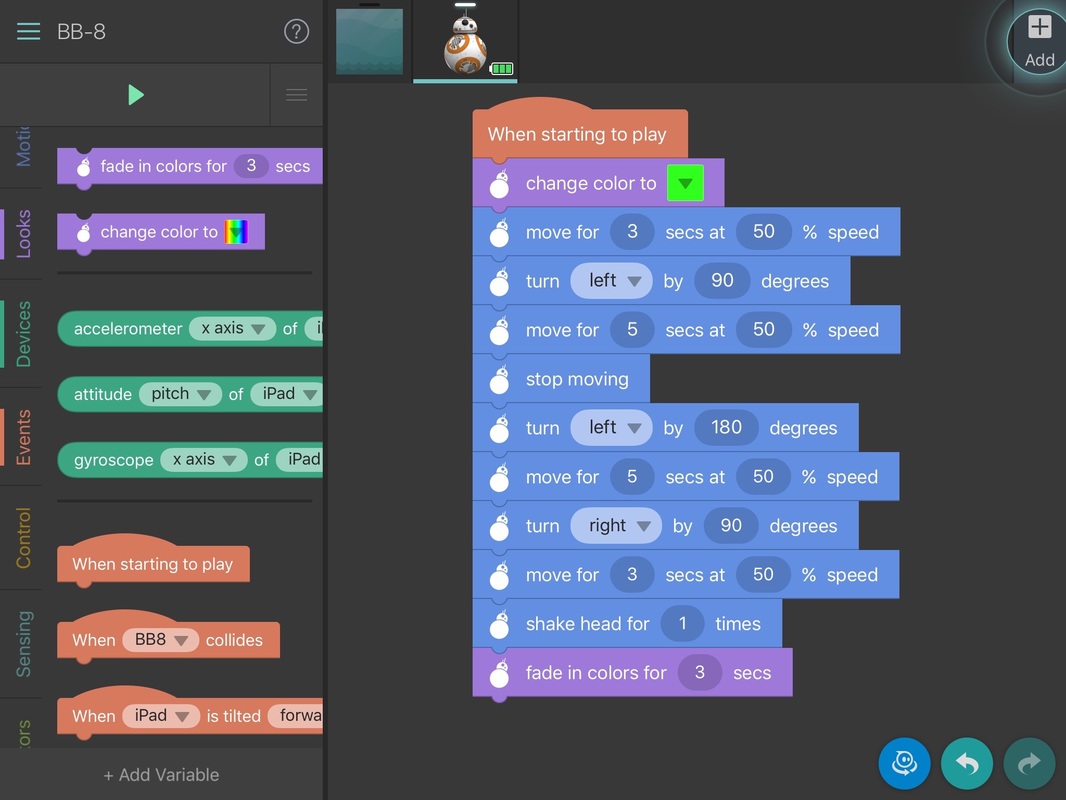|
Perhaps this seems obvious, but it also is something that needs to be stated. Also, note the new mark on the image below. We'll soon be able to post more information about the book - release date, cover art, etc. Stay tuned! Being clear about your expectations while being flexible about the way you support others in their efforts to meet those expectations seems, to us, to be the best way to arrive at a situation that actually works.
0 Comments
I was at the #TiES15 conference in Minneapolis, MN for the past couple of days learning and sharing with a really terrific group of educators from the region. I had written previously here about ordering a BreakoutEDU kit (which is currently on backorder due to high demand). They do provide the resources and information for a DIY kit, but I like the nice lock box they provide so I will happily wait. On the conference schedule I saw that there were sessions about BreakoutEDU running during each block and I managed to get into one of the sessions which were all capped at 15 people. It turns out one of the creators of BreakoutEDU was in fact facilitating the sessions which was pretty cool. You can learn more about BreakoutEDU from their website, but essentially it is a toolkit for designing a blended physical and virtual space puzzle while weaving in content-related themes into the tasks needed to "break out.." It follows the popularity of Escape the Room events. I had a hunch that Explain Everything would be a good complimentary tool for BreakoutEDU, but once we actually jumped into the game my hunch was totally validated. I found that being able to take pictures of puzzles, sketch out notes and ideas, look things up on the internet, and try to connect clues and identify patterns were all things needed to succeed in the game. Of course team work and communication were also vital parts when trying to make sense of puzzling artifacts. Below is a screenshot of my scratch space I used while trying to help our group solve the puzzle (which we did in 28:43!). I think other people will still be doing this exact game today at the conference so I don't want to post any spoilers. But once a game is complete, there is an opportunity to record and reflect on the processes and to orally untangle the clues that were documented and added to the stage.
I learned a random fact that am pretty annoyed that I had never stopped to think about especially given how much I like playing poker and the amount of math, probability, and statistics involved. When you shuffle a deck of cards, the order of the cards in the deck is statistically likely to be a combination that has NEVER EVER EVER existed! What? When thinking about probability, to calculate the number of permutations you take the number of choices for the first slot (in this case 52) and multiply that by the number of remaining choices (51) and so on until all 52 possible slots have been filled. Or in other words there are 52 x 51 x 50....3 x 2 x 1 possible combinations. This is also known as 52 factorial and 52! is the notation. It works out to a number of possible combinations like: 80,658,175,170,943,878,571,660,636,856,403,766,975,289,505,440,883,277,824,000,000,000,000. That is an insanely large number. It means that if there were 1 billion auto card shufflers each shuffling 1 billion decks of cards per day for 1 billion days, it would only account for (statistically) .0000000000000000000000000000000000000001 % of possible permutations. Also last week, I got an email from Zynga. Normally I delete these messages because they are usually spam messages about trying some new game (I do play Words with Friends - my name is Reshan if you want to challenge me!). But I learned about WordStreak - which is basically like tournament Boggle. Yes! The game itself is well designed (being able to swipe and drag to create words). Plus it allows two letter words and uses Scrabble letter scoring and bonuses. Very addicting and fun! As the end of 2015 draws near I am already adjusting a few things with this routine.
First - I am going to change my mailing list to a monthly recap instead of a weekly digest. I'll put the post from each category that had the most views/tweets/shares. Second - I am ending the Poet Laureate category (i'll keep the posts but remove the tag and category). The reason is that there is a new topic that I have decided I want to dive more deeply into...The Future of our Species. I know it sounds kind of heavy and probably too big to try and tackle on my silly blog, but I have been wrestling with this idea for the past few months now and I think I am starting to see new ways to make sense of what happens in schools and what happens in the world. More to come on Friday. When learning is centered Writing poems is still the hardest part of this whole format. I don't enjoy it and I think they are all pretty terrible. But I also know the only way to get better at something (and maybe change levels of enjoyment) is to practice and stick with it for a long enough time to make enough of an informed decision to continue or abandon. I have only written 14 poems. This week's poem is the first sentence of a session proposal I was recently asked to prepare and I just played with the phrasing.
I've played around with some syncopated rhythms and melodies in this week's track. All parts were recorded with instruments except the drums which I performed on a keyboard. Drums, bass, 3 keyboard tracks, and 3 guitar tracks.
From our chapter about mission articulation and advancement: In the schools we have today, if a mission falls in the woods and no one is around, it does not make a sound. And no constituent is served by such silence — not the student who should derive motivation and focus from the school’s mission, not the parent who should partner with the school to support the school’s mission, not the teacher who should inspire students to reach for the school’s mission, not the alumni who should proudly support the school’s future. I also tried to make an animated GIF (its subtle but the trees in the background are actually moving). The file size is a bit prohibitive but this was just a first attempt. I can't even seem to embed it here without things going crazy but here is a link to it. Next week I'll figure out how to do it better.
As a senior in college I worked as an assistant basketball coach at my high school, mostly with the JV team. Most coaches on the sideline use a whiteboard and dry-erase marker to quickly diagram plays. Chances are that will continue to be more efficient than breaking out an iPad (though you never know). One thing I used to love in basketball video games was the plays you could set up and call in the game. In the "pause" menu there would often be an animation that showed the way that the plays would unfold. I've made a very simple Explain Everything project file with a basketball court and shape objects to represent the players. Using the 'mixed recording' mode, it is possible to animate each player one (or two) at a time to get the same effect as those video game pause menus. Here is the project file and below is the video proof of concept. The Sphere BB8 Droid arrived in the office last week. Using the Tickle for iOS application my first attempt was to program it to leave the room make a few turns and go down the hallway. The problem was that the floor was very smooth (i.e. frictionless) so momentum tended to extend or amplify its movements. Here is a screenshot of the first program in Tickle. I probably should have started with something a little simpler on the first go around. Here is what happened. The second attempt was a little simpler in the steps. When filming, we decided not to follow it in hopes that it would return safely. It did! Also, now that I am doing a weekly summary at the end of the week as part of mailing list mediated by MailChimp, I'm changing the way I title the 'Last Week I Learned...' posts. Now they will have a description of the content as opposed to just the dates. Learning through iteration.
Monday I share a few things I learned during the previous week.
It's hard to predict what form this takes but I try to keep it brief. Tuesday I share a project, idea, or creation that involves Explain Everything. When possible I include the project file so that others can download and remix the content. Wednesday I share an infographic and quote related to my upcoming co-authored book Blending Leadership: Six Simple Beliefs for Leading Online and Off. Thursday I share a short piece of music that I composed. I know I don't have the predictable schedule to have time to compose and produce a full song every week, but I am able to knock out a small section. Friday I share a poem. I am not a poet and in fact poetry may be one of the art forms that I am still yet to fully appreciate, even though I appreciate good lyrics in a song. Perhaps I need the words to be set to music in order for me to connect with them. But I also am intrigued by the status of being a 'Poet Laureate.' In order to be considered for such a status, you need to write poems. Therefore, I am writing poems. Then I will publish an anthology of my poems. Then I will become Poet Laureate. Often when playing with other musicians things can digress into loosely structured improvisations. Sometimes it is good, sometimes it is terrible, and often times it goes on longer than it should. I'm finding myself more and more ending my 16 bars with some black hole appendages, thus making it 20 or 24 bars or more, defeating the purpose. Next week I'll tighten things up. This week however...
|
AuthorDr. Reshan Richards. Learn more here or contact me here or follow me here! Get the Blending Leadership Newsletter with 6 simple things to check out with each edition. Opt in here.
WatchTEDxNYED: About Assessment
Archives
October 2017
|









 RSS Feed
RSS Feed
